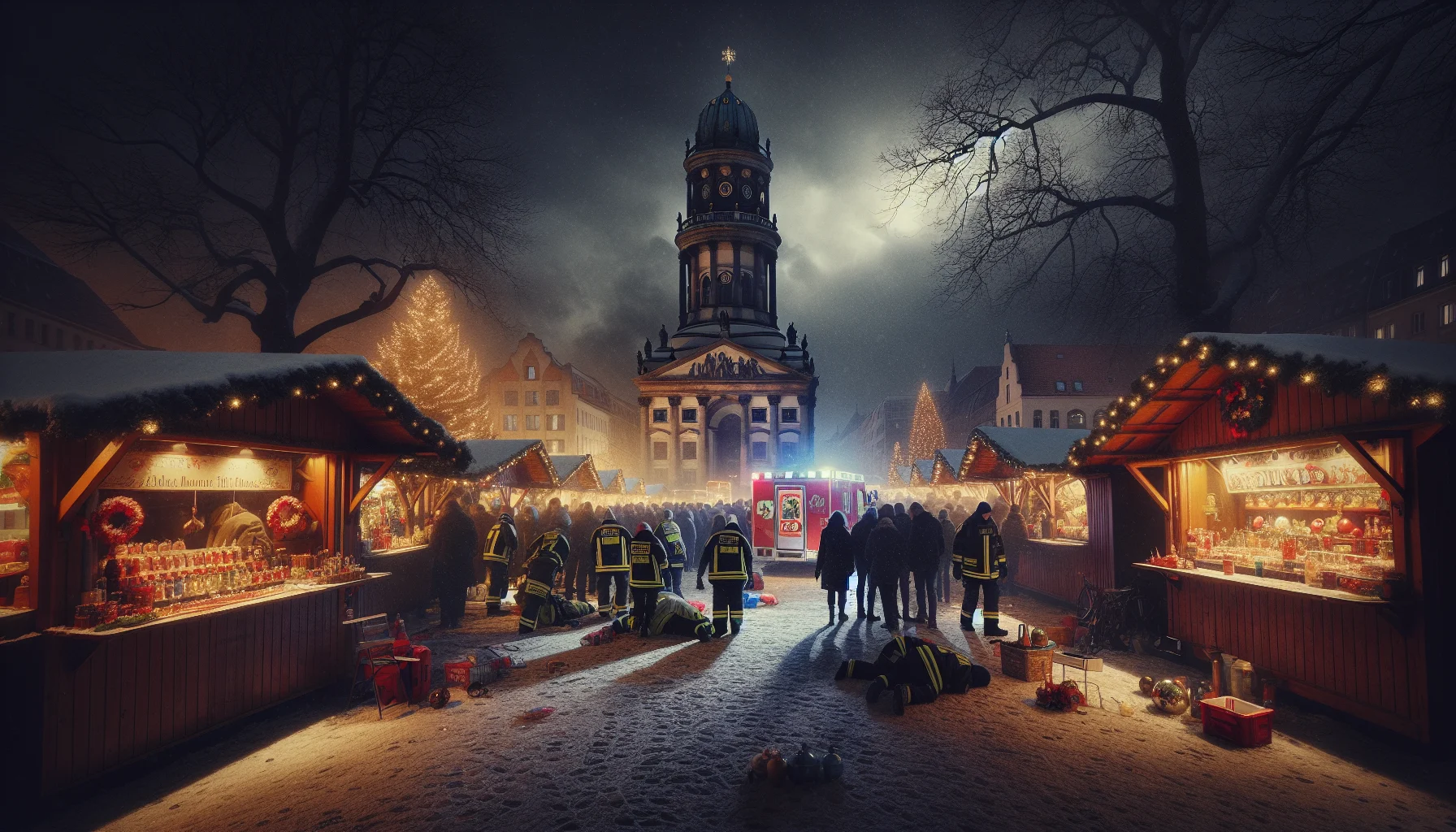
2016 Berlin Truck Attack
by: The Calamity Calendar Team
December 19, 2016
A Silent Night Shattered
On an otherwise peaceful evening on December 19, 2016, the air at Berlin’s Breitscheidplatz filled with festive cheer and the scent of pine, cinnamon, and roasting chestnuts. The Christmas market there, ringed by historic buildings and twinkling lights, provided a cozy retreat from the chill of the German winter. Visitors strolled between stalls, warming their hands on cups of mulled wine, blissfully unaware of the horror about to unfold.
Around 7:45 PM, the tranquility was violently shattered. An ominous rumble, metallic and fierce, roared down the street as a lorry tore through the crowded market, leaving devastation in its wake. Twelve lives were lost that night, among them the truck's hijacked driver. The attack sent shockwaves not only through the city but the entire nation, stirring fears and inciting debates on issues that had simmered for years.
Prelude to Tragedy
Germany, like much of Europe, had been acutely aware of the rising tide of terrorism. Just a year earlier, France experienced its own horror with the Paris attacks and a lethal truck attack in Nice. In Germany, the public discourse was rife with discussions on immigration, as the nation absorbed vast numbers of refugees from countries torn by conflict like Syria and Afghanistan. Policies were under scrutiny, with questions of national security and integration coming to the forefront.
In this charged atmosphere, Anis Amri, a Tunisian national with a troubled history, slipped through the cracks. He arrived in Germany with hopes of asylum but was denied. Despite being on the authorities’ radar for potential extremist ties, the complexities of deportation processes meant he remained. Instead of finding refuge, Amri found hatred, consuming words of violence and radicalization through his networks.
The Night of Chaos
As the winter's sky darkened over Breitscheidplatz, Amri took control of a truck, violently subduing its unfortunate driver, Lukasz Urban, a Polish citizen earning his day’s wage. The details of Urban's fate serve as a chilling reminder of the human cost, a man tragically caught in the crossfire of a cause he was never part of.
Minutes later, at approximately 8:00 PM, the lorry plowed through the market. Witnesses would forever remember the abrasive force with which the truck cut through memories of joy and warmth, transforming them into chaos and panic. Christmas displays, once vibrant and merry, became shrapnel in the wake of the vehicle's rampage.
Thanks for subscribing!
Escape and Pursuit
Amidst the confusion, the attacker vanished into the night. However, he also left significant evidence behind—the most crucial being his identification papers. This mistake proved invaluable to the police, transforming what could have been an anonymous horror into a pursuit fueled by a tangible target.
A frenetic manhunt ensued, with authorities scouring surveillance images, compiling intelligence, and warning possible accomplices or witnesses. Europe watched, holding its breath, as the grip tightened around Amri. The manhunt wasn’t just about finding a criminal and preventing further attacks; it was a race against time, layered in anxiety and urgency in the face of potential threats.
The Culmination in Milan
The chase drew to a close on December 23, nearly a thousand kilometers away in Milan, Italy. After days on the run across Europe—a reality that questioned the porous nature of national boundaries—Amri was identified by officers. The confrontation ended in a blaze of gunfire, his life extinguished, his journey halted.
For Berliners, for Europeans, for the world, the takedown in Italy brought a sense of relief yet also raised unsettling questions. How could a known threat navigate multiple countries so easily? Where had the systems fallen short? And crucially, how could future horrors be prevented?
The Ripple Effects
As in all acts of terrorism, the physical destruction was only part of the devastation. Economically, psychologically, and socially, the attack left its scars. Berlin’s tourism industry, a thriving economic pillar, faltered as the specter of fear overshadowed seasonal cheer. The bustling markets that characterized the city’s winters adopted heightened security measures, altering the landscape of the city’s most joyous traditions.
Communally, the attack sowed seeds of fear but also galvanized resilience. Berlin’s response was multifaceted—rallying around communities, supporting those affected, and reaffirming principles of welcome and diversity that had long been the city's hallmark. Yet amidst that faith in unity, it also compelled a sobering evaluation of national security protocols and the need for reform.
Reflections on Security and Policy
In the afterglow of the attack's harrowing light, German authorities conducted an exhaustive review of the circumstances that allowed the atrocity. It revealed disconcerting lapses in intelligence sharing and coordination between national and international agencies. Consequently, reforms followed, including bolstering security measures and tightening local and cross-border protocols, especially within the Schengen Area.
The event prompted earnest discussions on immigration policies and deportation laws. Advocates urged pragmatic approaches that balanced empathy with vigilance, improving the tracking and management of individuals deemed potential threats.
Moving Forward
In the years since that fateful December evening, Berlin remains a city proud of its ability to welcome the world yet vigilant against the threats that sometimes accompany that openness. The Christmas market eventually reopened, symbolizing not just defiance in the face of fear, but a tribute to the lives affected, a testament to human spirit’s capacity for healing, and a reminder that, even in moments of darkness, lights can find a way to shine again.
Stay in the Loop!
Become a Calamity Insider and get exclusive Calamity Calendar updates delivered straight to your inbox.
Thanks! You're now subscribed.